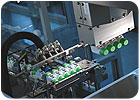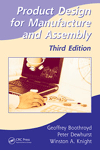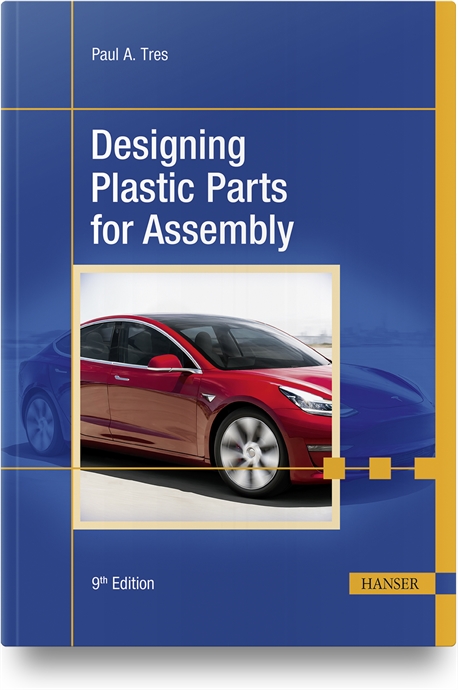
This complex inhaler
assembly line operates on 230 square meters. It features six assembly machines,
three tray handlers and 17 turnkey feeders. Photo courtesy sortimat Technology
GmbH & Co.
Every day, many thousands of people around the world use powder inhalers for the treatment of respiratory diseases. These devices are predominately made from plastic parts. Some are manufactured by Almirall Sofotec, one of the top 80 pharmaceutical companies in the world in terms of sales, and market leader in its native Spain.
Before 2005, Almirall Sofotec’s state-of-the-art inhalers had been made on a semiautomatic assembly line by Gerresheimer Wilden GmbH, which develops and manufactures innovative plastic systems for drug delivery. That year Almirall Sofotec decided to streamline inhaler production, enhance product design and technology, and introduce fully automatic manufacturing-including filling the inhaler with the medication.
Carsten Niederlaender, head of pharmaceutical development at Almirall Sofotec, says the company wanted to gradually ramp up annual production of the inhaler to more than 12 million units in 2009.
So Gerresheimer Wilden offered to collaborate with Almirall Sofotec to both develop and manufacture its inhaler using fully automated assembly. Gerresheimer Wilden also contacted sortimat Technology GmbH & Co., which had been working with Gerresheimer for 13 years on designing and building end-to-end assembly systems. Together, Almirall, Gerresheimer and sortimat devised a solution.
Almirall wanted a single system that could complete 40 inhalers per minute. The challenge was to assemble 19 individual components, some of them in direct contact with the medication.
Gerresheimer Wilden requested sophisticated PLC programming to enable the automatic clearing of parts at the end of a batch and for cleaning. Gerresheimer also requested that the assembly system have smooth surfaces and no recesses. Components had to be resistant to aggressive cleaning agents and could not be fastened with Allen bolts. Moving parts were required to have seals to prevent particles from passing between the drive and the assembly area.
Gerresheimer stipulated more than 85 percent uptime for the line as a whole, and no more than 2 percent bad parts as a direct result of the assembly process. In addition, the assembly machine needed to meet DQ (Design Qualification), IQ (Installation Qualification) and OQ (Operational Qualification) requirements; software had to fulfill Good Automated Manufacturing Practice (GAMP) guidelines; and electronic records had to comply with 21 CFR Part 11.
“We’ve got four integrated assembly machines, and each one of them has to have guaranteed uptime of around 97 percent so that the whole system can achieve the required 85 percent,” says Michael Kanzler, head of project management at sortimat. “It’s the same for the bad parts quota, which at less than 0.5 percent per machine, is highly demanding.”
Sortimat provided six Discovery assembly machines, three Clearliner tray handlers and 17 Birkman turnkey feeders for the complex assembly line, which operates on 230 square meters in a Class 100,000 clean room. The Birkmans are end-to-end units that feature a bowl feeder to ensure smooth feeding of parts, such as springs that easily become tangled.
“As far as assembly is concerned, this is the most complex system we have in operation here,” says Lothar Mehren, head of automation engineering at Gerresheimer Wilden.
Although the line is based on pick-and-place assembly only with relatively little in-line testing, it still poses assembly challenges related to the flap valve and activation lever.
The flap valve is designed to seal the inhaler after each use and be ready for the next dose of medication. Inserting the flap valve into the chamber requires great precision in commissioning.
Assembling the activation lever also requires great skill and accuracy. Here a metal spring integrated with a plastic component must be placed into another part. Because of the component’s shape, it was not possible to create a guide within the receiving part, as is normal practice.
Neverthless, the specialists from sortimat found a reliable method of inserting the spring into exactly the right position-despite the relatively large distance of travel involved and lack of inner guides.
For more information on assembly systems and feeders, call 847-925-1234 or visit www.sortimat.com.



